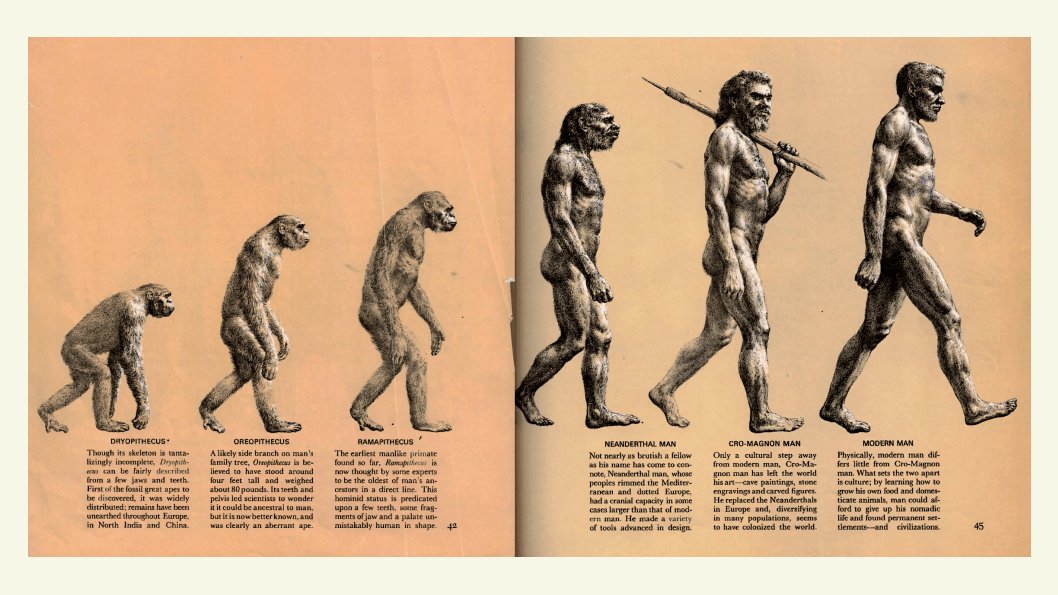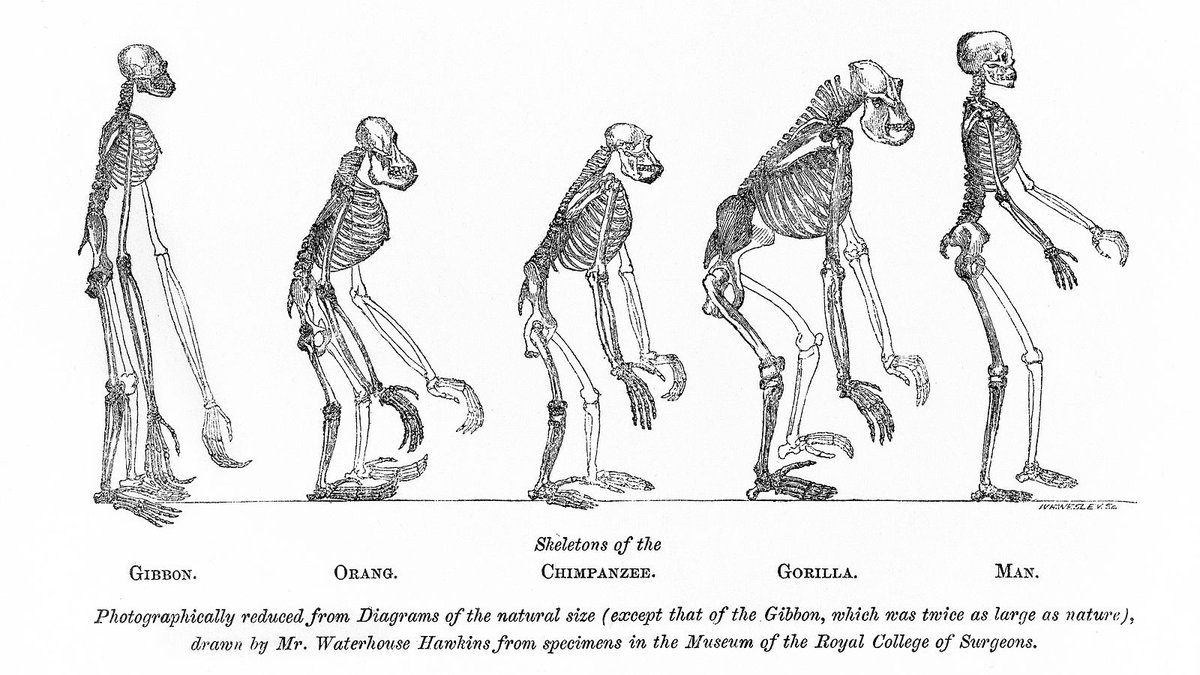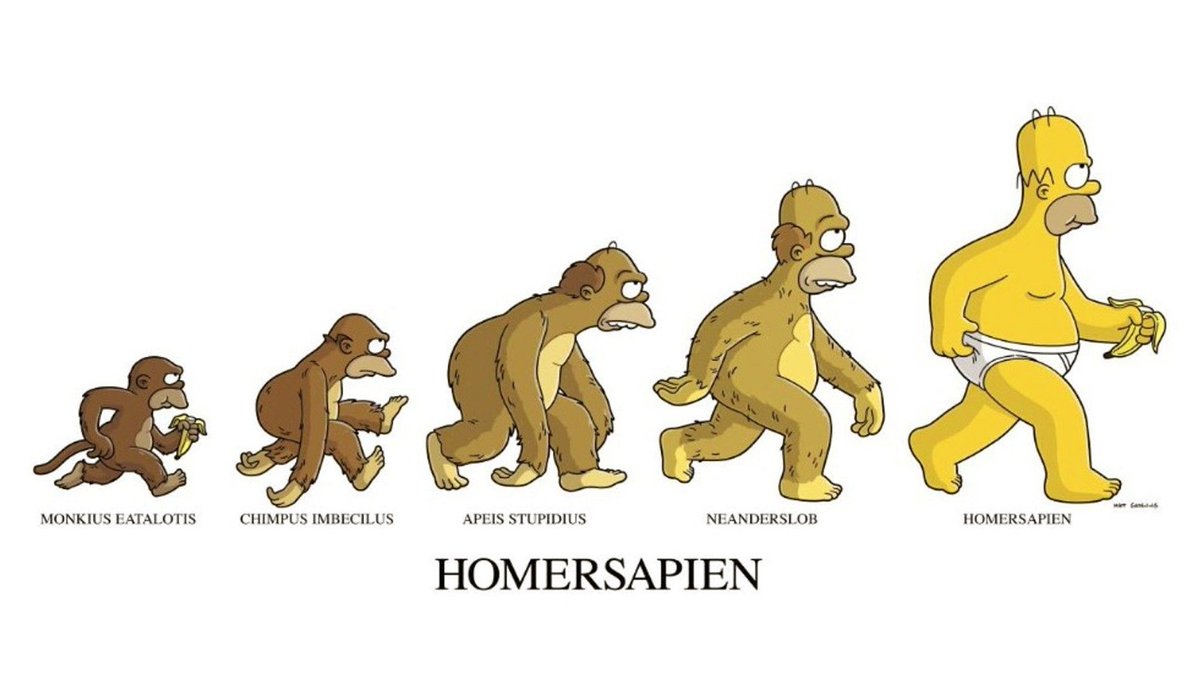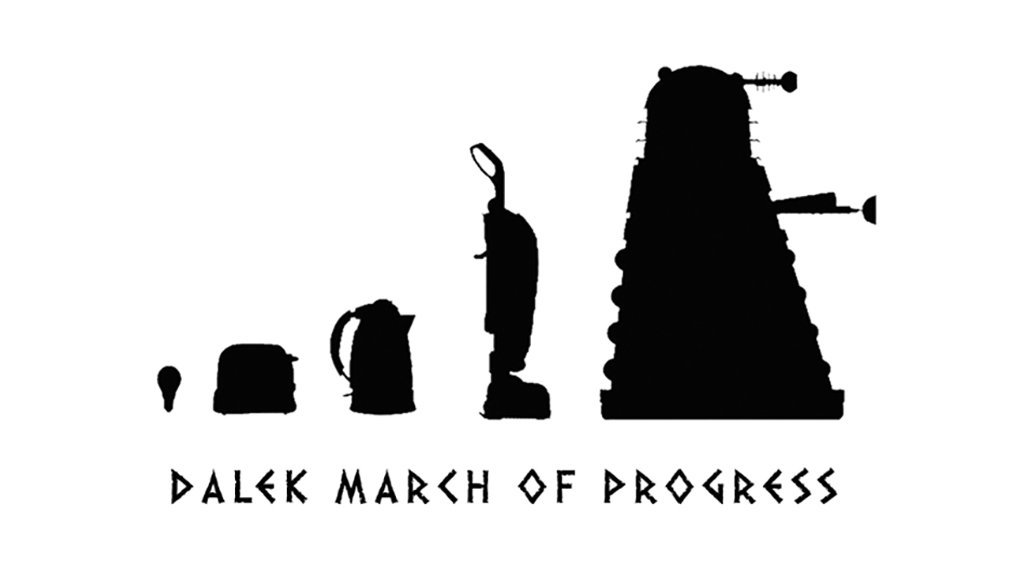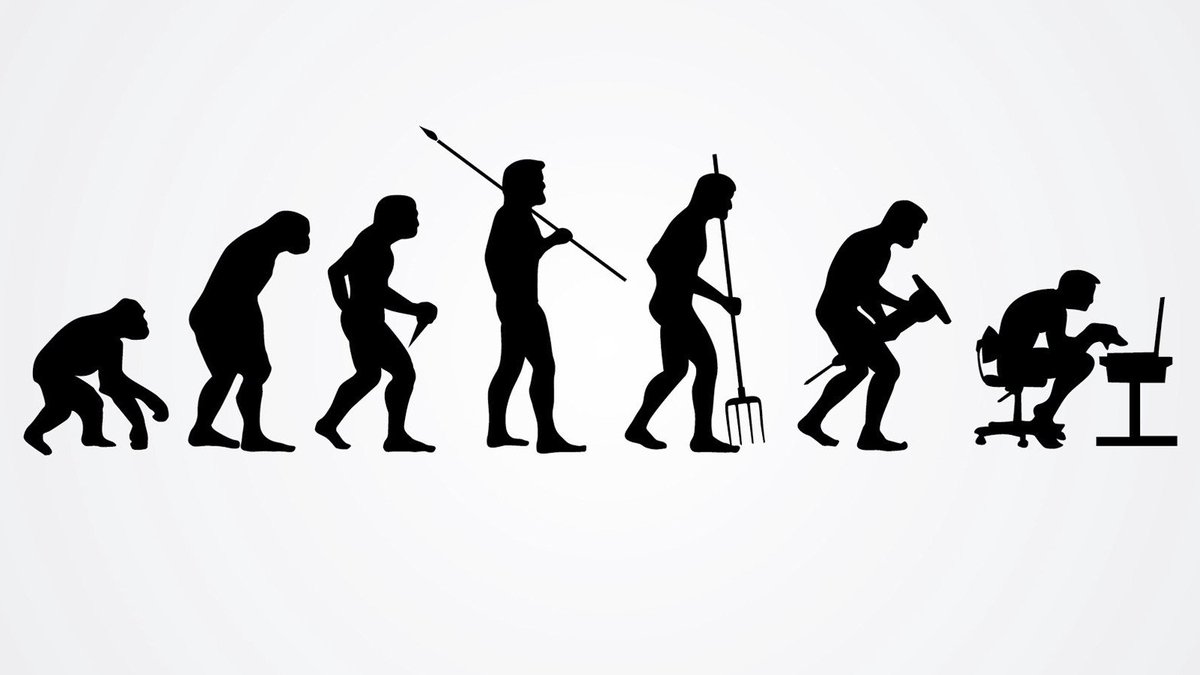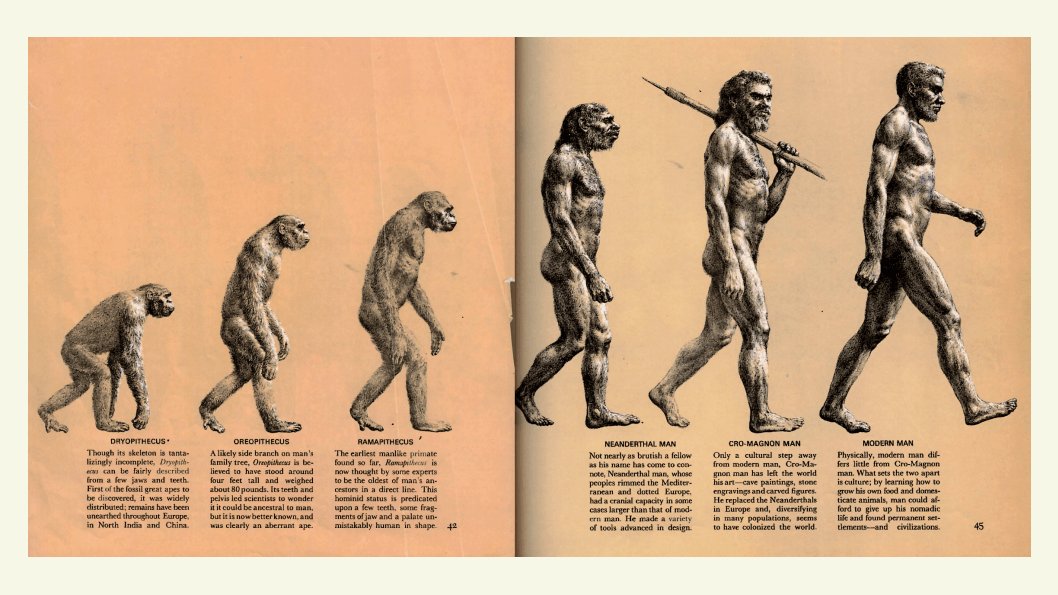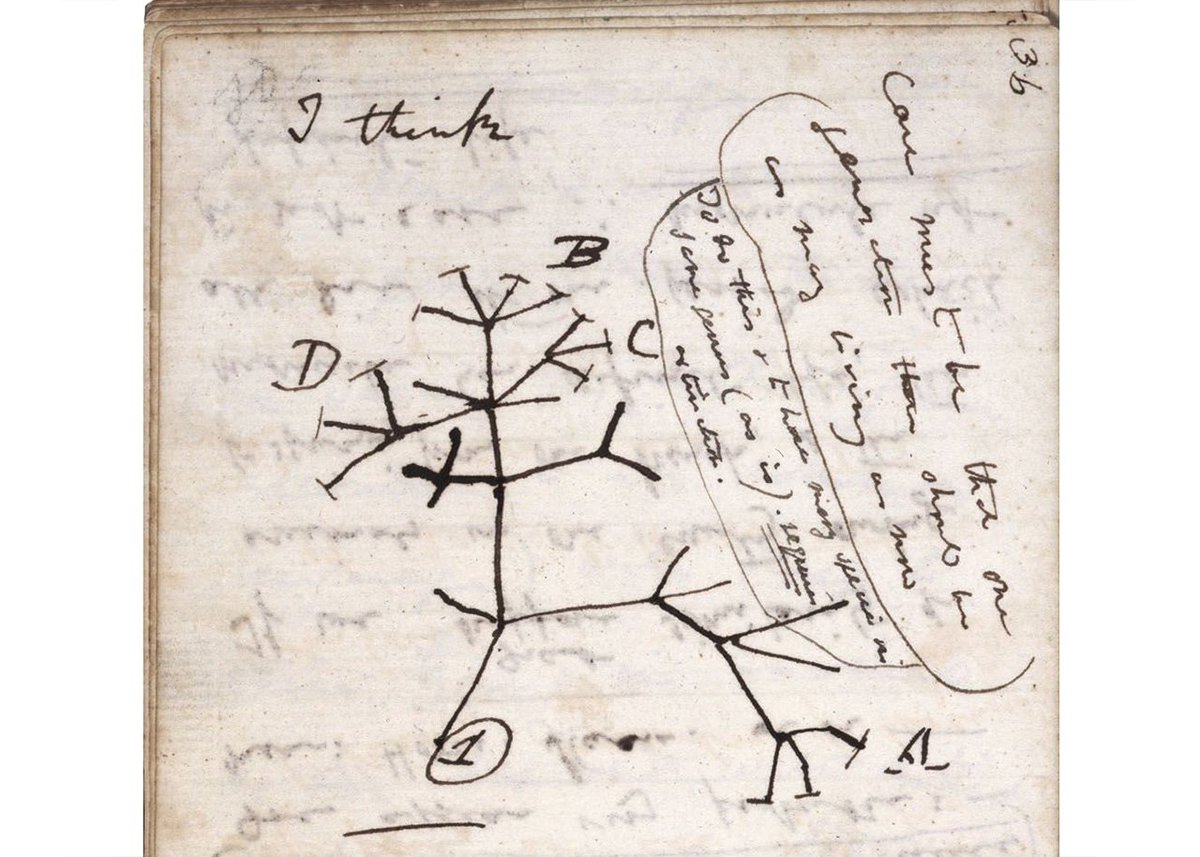Striking images can make scientific ideas accessible to people from all walks of life. But some such pictures do more damage than good, seeding confusion & fueling widespread misconceptions of an essential topic. Two iconic images & (mis)understanding evolution — a thread...1/10
First, an instantly recognizable image that, in our collective consciousness, has become inextricably tied to the very concept of evolution itself. Tragically for one of the most famous scientific illustrations ever, it is fundamentally flawed, & a potent driver of fallacy. 2/10
Key background re origins of Exhibit A. The Road to Homo Sapiens (aka The March of Progress) was created by natural history artist Rudolph Zallinger for a 1965 Time-Life publication “Early Man”. The full version was a multipage annotated foldout including 15 aligned figures. 3/10
It’s likely that Zallinger took inspiration from earlier illustrations, such as this drawing from the 1863 book “Man’s Place in Nature” by T. H. Huxley, a contemporary of Darwin. Here, Huxley is comparing skeletons of different extant apes, not depicting steps in evolution. 4/10
Something about Zallinger’s distinctive procession of figures, from crouching ape to striding hominin, caught the imagination of the public. It spread through popular culture as a virulent meme (even before the term had been defined) spawning multiple variants along the way. 5/10
But this seemingly canonical picture of evolution in action deeply misrepresents its subject. The vision of a linear succession, one form morphing to another, each more sophisticated than the last, is an illusion. Plus, evolution as a process has no foresight, no destination.6/10
Misconceptions fed by this flawed image are embraced by those who deny the reality of evolution. From tired gotcha questions (why are there still monkeys?) to Mike Pence telling US Congress in 2002 that newly uncovered branches of extinct hominins invalidate Darwin, & beyond.7/10
Bringing us neatly to Exhibit B, a drawing Darwin made in 1837 as he puzzled over the origin(s) of species. One rough sketch (with an understated note “I think”) captures a huge idea at the heart of biological evolution: descent with modification from a common ancestor. 8/10
A sad side-note. A few days ago Cambridge University announced that the red leather notebook in which Darwin drew this iconic sketch is one of two that mysteriously went missing 20 years ago. Presumed stolen, the notebooks have yet to be recovered. 9/10 https://www.bbc.com/news/entertainment-arts-55044129
The inevitable March of Progress is a myth. What evolutionary thinking teaches us is that Homo sapiens is one fragile branch on a vast ancient tree of life, or (in light of evidence that we co-existed with other hominins) just one remaining channel from a braided river. 10/10

 Read on Twitter
Read on Twitter